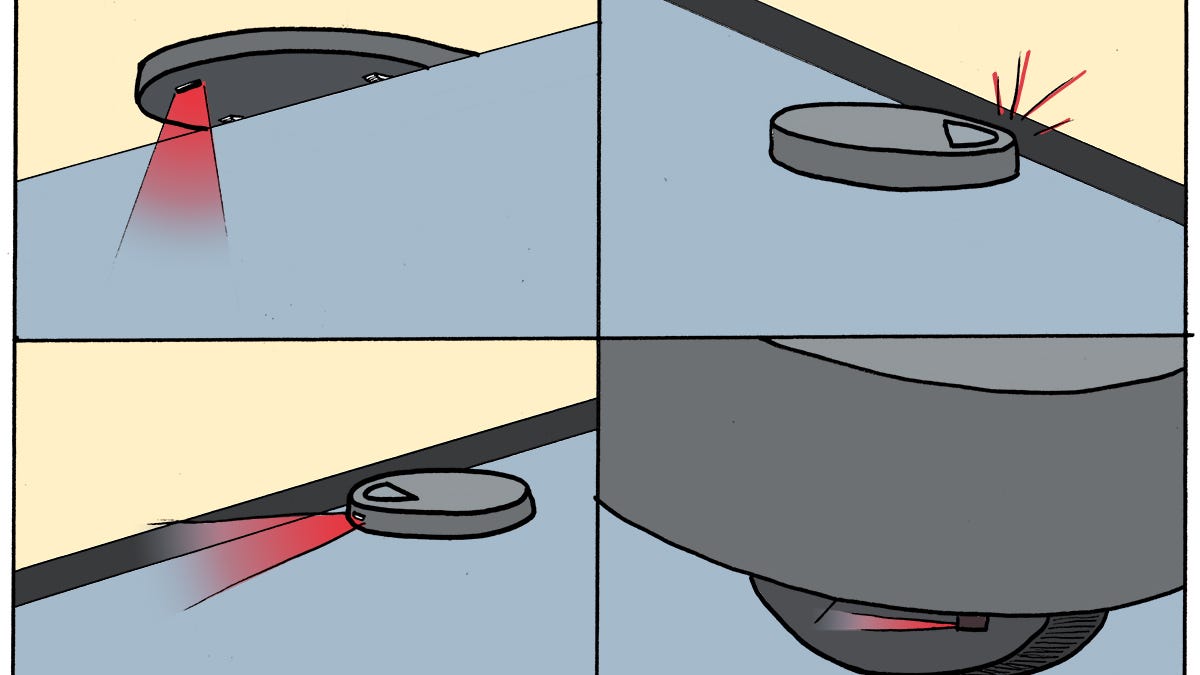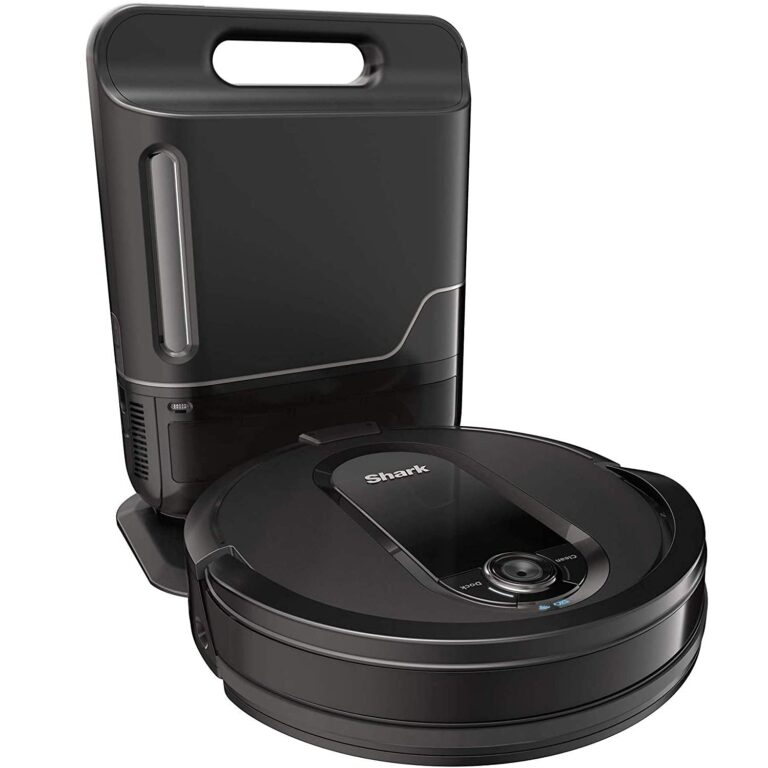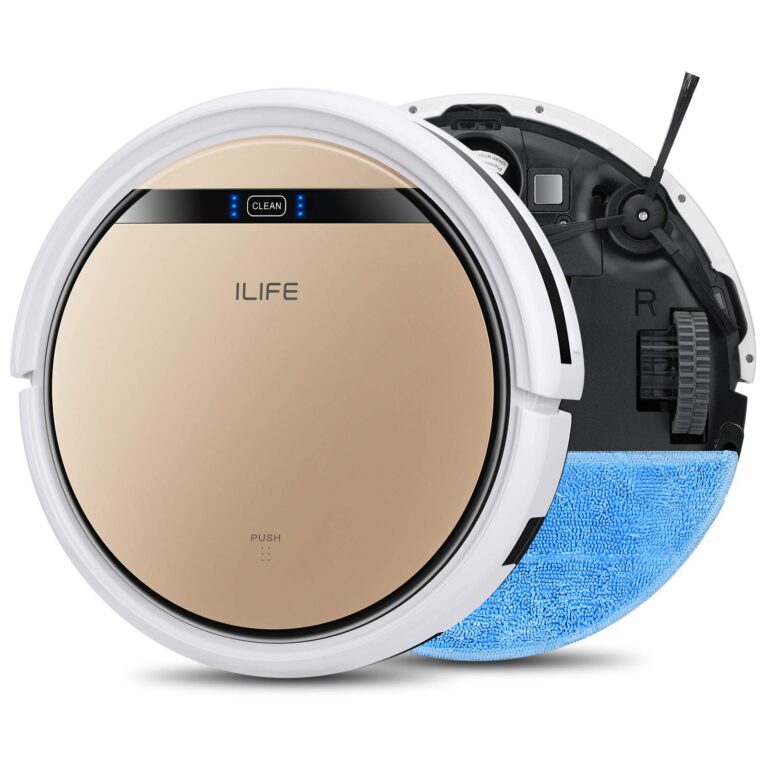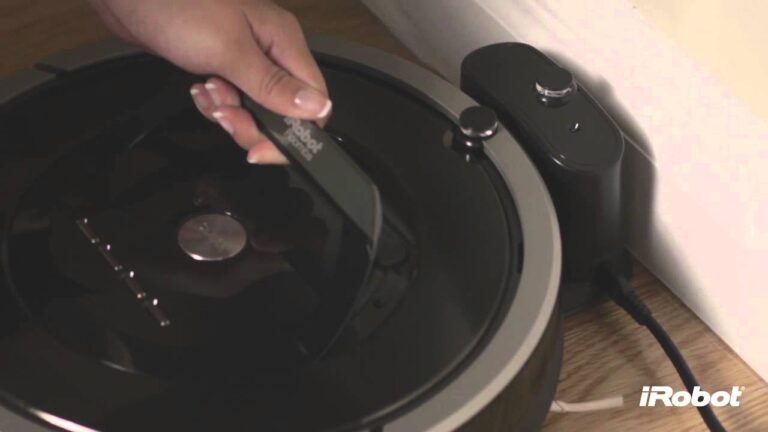How to Clean Robot Vacuum Sensor?

To clean a robot vacuum’s sensors, you need to gently wipe them using a soft cloth or a cotton swab. Proper maintenance of the sensors ensures optimal performance.
In addition to regular cleaning, make sure to check the manufacturer’s instructions for any specific cleaning recommendations.
Why Clean Robot Vacuum Sensor Regularly
Regularly cleaning the sensor of your robot vacuum is important to maintain its optimal performance. Dirty sensors can significantly affect the vacuum’s efficiency and lifespan. By cleaning the sensor, you can ensure that it accurately detects obstacles and navigates smoothly through your home.
A dirty sensor may cause the vacuum to miss spots or get stuck more frequently. This not only reduces its effectiveness in cleaning but also increases the time it takes to complete the task. Moreover, a clean sensor allows the robot vacuum to operate more efficiently by avoiding unnecessary collisions and reducing wear and tear on its internal components.
Therefore, make it a habit to clean the sensor of your robot vacuum regularly to maximize its efficiency and prolong its lifespan.

Credit: us.air-robo.com
Signs That Indicate The Sensor Needs Cleaning
Cleaning the sensor of your robot vacuum is essential for maintaining its efficiency. If you notice irregular movement patterns, such as jerky or unpredictable behavior, it could indicate a dirty sensor. Pay attention to frequent stalling or the vacuum getting stuck in certain areas, as this can also be a sign of a sensor in need of cleaning.
Error messages or alerts on the vacuum’s display may specifically indicate sensor issues. Reduced suction power is another indication that the sensor needs cleaning. By regularly checking and cleaning the sensor, you can ensure that your robot vacuum remains in peak condition and continues to effectively clean your home.
Step-By-Step Guide On Cleaning The Robot Vacuum Sensor
Cleaning the robot vacuum sensor is essential to ensure its efficiency. Begin by gathering the necessary cleaning tools. Make sure to power off and unplug the robot vacuum before proceeding. Locate the sensor on the robot vacuum and carefully remove any dust and debris.
To clean the sensor, use a microfiber cloth or brush, ensuring a thorough cleaning. Once the sensor is clean, reassemble the robot vacuum and power it back on. Regularly cleaning the sensor will enhance the performance of your robot vacuum, allowing it to efficiently navigate your home and keep it clean.
Cleaning Methods For Different Types Of Sensors
Robot vacuum cleaners have become increasingly popular for their convenience and efficiency in keeping our homes clean. However, it’s crucial to regularly clean the sensors to maintain their optimal performance. When it comes to cleaning different types of sensors, there are specific methods for each.
Infrared or optical sensors can be cleaned using a soft, lint-free cloth to remove any dust or debris. Ultrasonic or proximity sensors may require a gentle wipe with a damp cloth to ensure their accuracy. For cliff or anti-drop sensors, using a can of compressed air can effectively remove any dirt that may affect their functionality.
Lastly, touch or bumper sensors can be wiped clean with a cloth dampened with mild soapy water. By following these cleaning methods, you can ensure that your robot vacuum’s sensors remain in top condition, allowing it to navigate your home seamlessly and efficiently.
Safety Precautions And Best Practices
When cleaning the sensors of your robot vacuum, it is crucial to follow safety precautions and best practices. Always be gentle with delicate sensors to avoid damage. Avoid using liquids or cleaning agents as they can harm the sensors. After cleaning, ensure that all parts are properly reassembled and tightened to avoid any malfunctions.
Taking these precautions will ensure the smooth functioning of your robot vacuum and extend its lifespan. Clean the sensors regularly to maintain optimal performance. By following these guidelines, you can effectively clean your robot vacuum sensors and keep your home clean and dust-free.
Maintenance Tips To Keep Sensors Clean
Regularly check and clean the sensor to ensure optimal performance of your robot vacuum. Create a cleaning schedule or reminder to stay on top of maintenance tasks. By minimizing the accumulation of dirt and debris, you can prolong the lifespan of your vacuum’s sensors.
Make it a habit to keep the surroundings of your robot vacuum clean, as this prevents dust and other particles from interfering with the sensor’s functionality. A tidy environment will also help your vacuum navigate more efficiently. Taking these steps will not only ensure that your robot vacuum’s sensors are clean and working well, but it will also enhance its overall cleaning performance.
Troubleshooting Guide For Persistent Sensor Issues
Robot vacuum sensors are essential for efficient cleaning. If you’re facing persistent sensor issues, there are a few troubleshooting steps you can take. Start by resetting the robot vacuum to restore its default settings. If the problem persists, consider contacting customer support for further assistance.
They can provide guidance based on your specific model and help troubleshoot the sensor issues. In some cases, professional servicing or repairs may be necessary to resolve the problem. By following these steps, you can ensure that your robot vacuum’s sensors are clean and working properly, resulting in efficient and effective cleaning performance.
Frequently Asked Questions For How To Clean Robot Vacuum Sensor
How Do I Clean Sensors On Roomba?
To clean sensors on your Roomba, follow these steps:
1. Turn off your Roomba and remove it from the charging base.
2. Locate the sensors, typically located on the front bumper and bottom of the device.
3. Use a soft cloth or cotton swab to gently wipe the sensors, removing any dirt or debris.
4. Ensure the sensors are completely dry before reinserting your Roomba into the charging base and turning it back on.
5. Regularly clean the sensors to maintain optimal performance and prevent any potential issues. By keeping your Roomba’s sensors clean, you’ll enable it to navigate and clean your floors effectively.
How Do I Clean The Sensors On My Shark Robot Vacuum?
To clean the sensors on your Shark robot vacuum, follow these simple steps. First, turn off the vacuum and unplug it from the power source. Next, use a dry, soft cloth to wipe the sensors gently. Be careful not to apply too much pressure or use any liquid cleaners, as this could damage the sensors.
Once you’ve wiped all the sensors, double-check to ensure that they are clean and free from any dirt or debris. Now, you can plug the vacuum back in and turn it on. Your Shark robot vacuum sensors should now be clean and ready for use.
Keep in mind that regular sensor cleaning will help your vacuum function properly and efficiently for a longer period.
How Do I Clean Roborock Sensors?
To clean Roborock sensors, follow these steps:
1. Turn off the robot and unplug it from the power source.
2. Remove the main brush and side brushes.
3. Use a small brush or cloth to gently clean the sensors located on the bottom of the robot.
4. Remove the dustbin and empty it. 5. Clean the dustbin and filter with water or a damp cloth.
6. Use a clean cloth to wipe the charging contacts on the robot and charging dock.
7. Let all the parts dry completely before reassembling them.
8. Place the main brush, side brushes, and dustbin back in their respective positions.
9. Ensure that everything is securely attached and snap the parts back into place.
10. Plug the robot back in and turn it on. Regularly cleaning the sensors and other parts of your Roborock will help maintain its performance and ensure effective cleaning.
Conclusion
Maintaining your robot vacuum’s sensors is crucial for optimal performance. Regularly cleaning these sensors ensures your device can navigate efficiently and avoid obstacles without hiccups. Use a soft, lint-free cloth or a cotton swab to wipe away dirt and dust gently. By following these simple steps, you can prolong the life of your robot vacuum and enjoy cleaner floors with minimal hassle.


